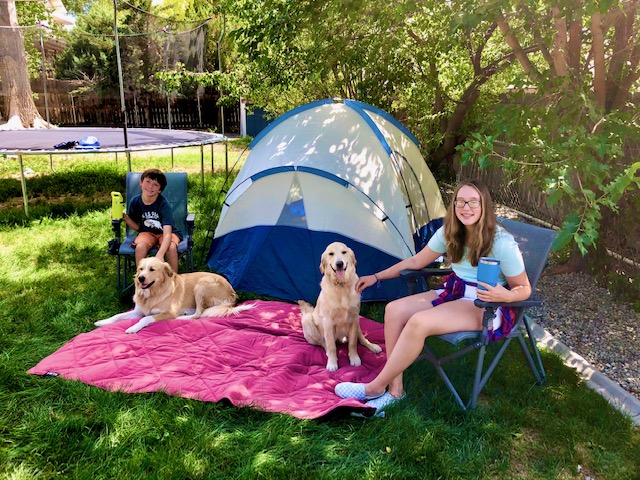
Tips for Keeping Your Dog Safe All Summer
Summer can be a dangerous time for dogs. Our canine companions are susceptible to the heat in a number of ways. From burned paws to dehydration and heatstroke, the health risks seemingly increase as the weather gets warmer.
As a pet parent, it’s vital to prioritize your pet’s health during the summer months. Here are some helpful tips for keeping your dog safe all summer.
Provide Cooling Options
Give your pet the royal treatment by offering plenty of opportunities to cool off. With the right products and creative thinking, your pet can beat the heat.
At home, add a few ice cubes to your dog’s water dish for a cool treat. Be sure to do this before strenuous exercise, as cold water immediately following physical activity can shock their system.
Whether you’re at home or on the go, offer plenty of shade and drinking water. If you plan on spending your summers at the beach, get a beach tent or umbrella where you and Fido can get out of the sun. Invest in a collapsable water dish and dog-friendly water bottle to ensure that you always have water with you.
Setting up a cheap kiddie pool at home is another great way for your dog to cool off during the summer months. You can even dip your tired paws in for some bonding time.
Finally, if you have a dog house, avoid leaving your pet in it as the weather picks up. Dog houses tend to become airless saunas as a result of the way they’re constructed. Consider a lean-to or tent instead. Pet Life also has collapsable dog houses with cooling technology, which are perfect for the summer months.
Know the Signs of Dry Drowning
Many pet parents buy into the myth that dogs are naturally skilled swimmers. While most dogs have some basic skills— it’s called a doggy paddle for a reason— they need practice just like humans. As dogs swim and play in the waves, they often ingest a lot of water.
In recent years, there have been horror stories on the internet about dogs that have a great day at the beach with their family, only to die inexplicably hours later. This phenomenon is known as dry drowning or secondary drowning and can happen to both dogs and humans.
Dry drowning is caused by the accumulation of water in the lungs. If your dog starts acting dizzy and lethargic or starts excessively drooling and vomiting, you must immediately call the vet.
When playing with your dog at the beach, be careful not to throw toys too far out into the water. Use floating toys that are easy to grip to mitigate the risk of your dog inhaling water as they try to get it. It’s also worth investing in a doggy lifejacket to keep your furry friend safe.
Protect Their Paws and Pads
If you wouldn’t walk barefoot across the hot pavement during the summer months, don’t make your dog. Dogs don’t have the same sense of self-preservation as humans— they’ll walk on the hot pavement without complaint while burning the sensitive pads of their feet.
Avoid walking on hot rocks and pavement, opting for shaded trails and grassy fields whenever possible. If you can’t avoid the pavement, invest in a pair of dog boots to help keep their paws safe during your summer adventures.
Plan Walks in Mornings and Evenings
In addition to providing boots and portable hydration, planning your walks and activities around the heat is another great way to keep your dog safe.
As the weather gets warmer, shift your walking and exercise schedule incrementally later or earlier. Take advantage of the extended daylight hours to make this happen.
If your dog tends to get more energized after play sessions, try to go in the mornings rather than the evenings. Doing so will ensure that your pet is ready for bed when you are.
Be Mindful of Your Breed
Some breeds have a harder time with the heat than others. Many pet owners tragically learn this first-hand during the summer months. Short-nosed breeds, in particular, struggle with the heat and humidity and are more likely to fall victim to heatstroke. These breeds include:
- Pugs
- Boston Terriers
- Boxers
- Bulldogs
- Pekingese
- Brussels Griffon
- Bullmastiffs
- Shar-Pei
- Spaniels
- Shih Tzu
Many mixed breeds and subsets that also struggle with shortened airways. If your dog tends to snort or snore, chances are they struggle with their airway and should be given special attention during the summer months.
If your dog is panting excessively or is having difficulty breathing, call a vet right away.
Trim, Don’t Shave
On the topic of breeds, don’t make the mistake of shaving your long-haired dog. Huskie owners often make this error during the summer months. While the intentions are pure, shaving your dog might cause more harm than good.
As dogs don’t sweat the way we do, their fur offers a barrier against their sensitive skin and the surrounding heat. You’ll see long-haired breeds go through a shedding period during the spring and summer months, for a cooler style.
While it’s ok to take your dog for a trim, work with a skilled groomer and avoid close cuts.
Consider Canned Food
As humans, we have the opportunity to hydrate both through our beverages and our food. Fresh produce, like watermelon and berries, have high water contents. These keep us hydrated during the summer, even when we aren’t sipping water.
Canned food offers the same experience to dogs. The increased moisture content can help provide extra hydration during the hot months. Consider shifting your ratio of dry to wet food as the heat picks up. Add a scoop of wet food to each serving or replace your dog’s dry breakfast with a canned alternative.
Canned food also tends to be higher in protein and water content while offering fewer carbohydrates. As many dogs struggle to exercise during the summer months, this simple switch can also help with weight management.
Remember to listen to your pet and reach out to the vet if you have any concerns during the summer months.






















